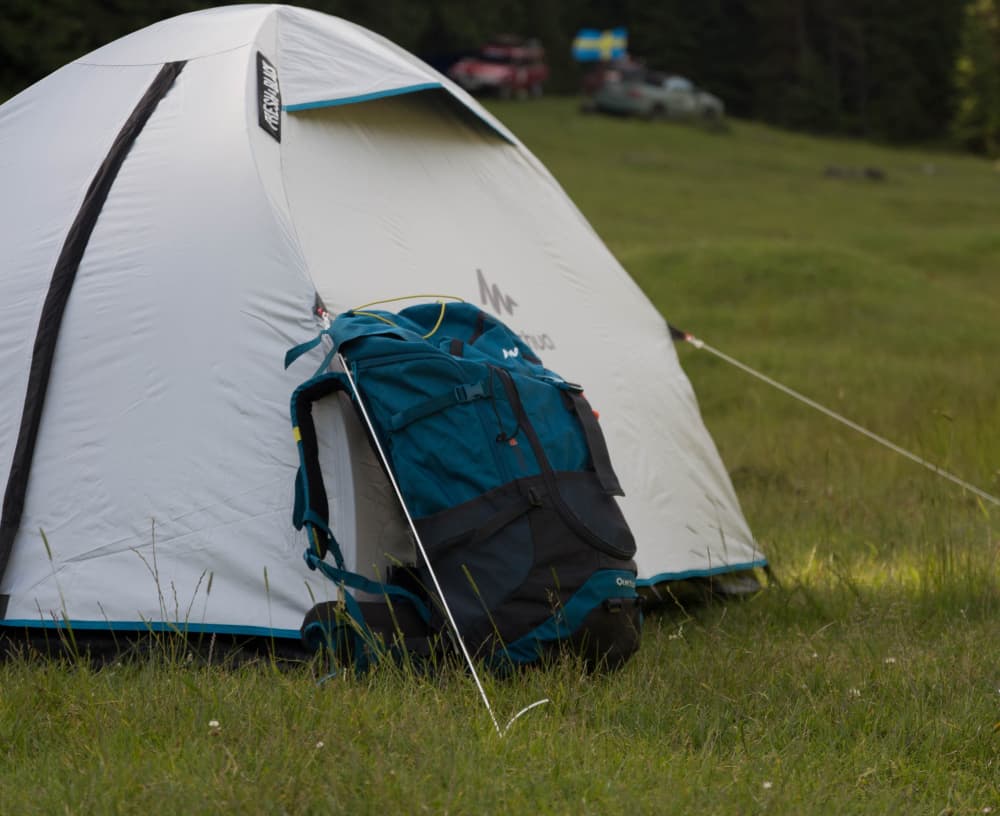I. Introduction
A. The importance of understanding the parts of a tent
Understanding the different parts of a tent is crucial for making informed decisions when purchasing, setting up, and maintaining a tent. Knowing the components and their functions ensures a better camping experience, from choosing the right materials for specific weather conditions to efficiently setting up and taking down the tent.
B. Overview of the article’s content and the benefits of familiarizing oneself with tent components
This article aims to provide a comprehensive guide on the parts of a tent. We will explore the structure of a tent, including the various types of tent poles and fabrics used. Additionally, we will delve into the different components and features, such as the rainfly, tent body, doors, windows, and floor. By familiarizing ourselves with these components, we can make informed decisions when selecting a tent and maximize its functionality during camping trips.
II. The Structure of a Tent
A. Tent Poles
- Types of tent poles (fiberglass, aluminum, carbon fiber): Discussing the pros and cons of different pole materials and their impact on durability, weight, and flexibility.
- Pole sleeves vs. pole clips: Understanding the different methods of attaching tent poles and their impact on ease of setup and stability.
B. Tent Fabric
- Types of tent fabric (nylon, polyester, canvas): Exploring the characteristics and performance of different fabric materials, including their durability, water resistance, and breathability.
- Waterproofing and breathability features: Discussing the technologies and treatments used to enhance the fabric’s ability to repel water and allow air circulation.
III. Tent Components and Features
A. Rainfly
- Purpose and benefits of a rainfly: Explaining the role of the rainfly in protecting the tent from rain, wind, and UV rays. Discussing the benefits of using a rainfly in different weather conditions.
- Types of rainflies (full, partial, integrated): Describing the different designs and coverage options of rainflies, including their advantages and limitations.
B. Tent Body
- Main structure of the tent: Understanding the components of the tent body, such as the walls, roof, and floor, and their role in providing shelter and privacy.
- Mesh panels and ventilation: Exploring the presence of mesh panels in tents and their contribution to airflow, condensation control, and insect protection.
C. Tent Doors and Windows
- Different door styles (single, double, D-shaped): Discussing the various door designs and their impact on ease of access, ventilation, and privacy.
- Benefits of windows for ventilation and views: Highlighting the advantages of having windows in a tent, including improved airflow, natural light, and scenic views.
D. Tent Floor
- Importance of a durable and waterproof floor: Stressing the significance of a sturdy and waterproof floor for protection against moisture, insects, and rough terrain.
- Attachment methods and flooring materials: Exploring different ways tents are secured to the ground and the various flooring materials used, such as bathtub-style floors and removable footprints.
IV. Additional Tent Accessories
A. Guy Lines and Stakes
- Securing the tent and enhancing stability a. Importance of using guy lines to stabilize the tent in windy conditions b. Proper placement and tensioning of guy lines for optimal stability
- Various types of stakes and their uses a. Traditional stakes (metal, plastic) b. Specialized stakes (sand stakes, snow stakes) c. Anchoring techniques for different terrain (hard ground, soft soil, snow)
B. Tent Vestibule
- Benefits of a vestibule for storage and additional space a. Storing gear and equipment outside the main tent area b. Providing a sheltered area for cooking, changing, or relaxing
- Different vestibule designs (standard, extended) a. Standard vestibules: Smaller extensions directly attached to the tent b. Extended vestibules: Larger extensions that provide more space and protection
C. Tent Repair Kits and Maintenance
- Essential tools for tent repairs a. Seam sealer: Reapplying waterproofing to seams b. Patch kits: Repairing tears or holes in the tent fabric c. Tent pole repair sleeves or splints: Fixing damaged or broken tent poles
- Regular maintenance tips for prolonging the lifespan of a tent a. Proper cleaning and drying of the tent after each use b. Storing the tent in a dry and well-ventilated area c. Inspecting and repairing any damage before each camping trip
V. Conclusion
A. Recap of the importance of understanding the parts of a tent
- Understanding additional tent accessories enhances camping experiences and ensures comfort and safety.
B. Encouragement to familiarize oneself with tent components for better camping experiences
- Knowing how to properly use guy lines, stakes, and vestibules can greatly improve tent stability and storage options.
C. Appreciation for the versatility and functionality of tents, thanks to their various parts and features
- Tents provide shelter, protection, and a sense of home in the great outdoors. Understanding their different components and accessories allows campers to fully utilize their potential.
In conclusion, additional tent accessories such as guy lines, stakes, vestibules, and repair kits play vital roles in enhancing the functionality and durability of tents. Properly securing the tent with guy lines and choosing the right stakes for different terrains ensures stability, while utilizing vestibules provides additional storage and living space. Moreover, having a tent repair kit and practicing regular maintenance helps extend the lifespan of a tent and keeps it in optimal condition. Familiarizing oneself with these accessories allows campers to make the most of their tent camping experiences, appreciating the versatility and reliability of tents in outdoor adventures.
